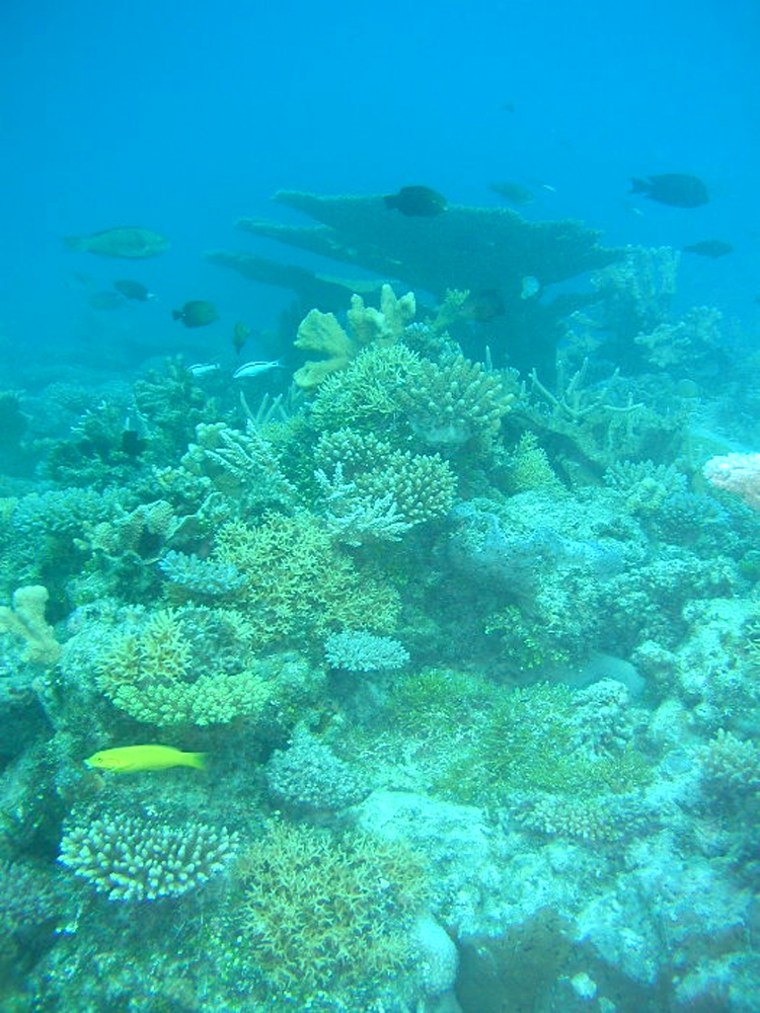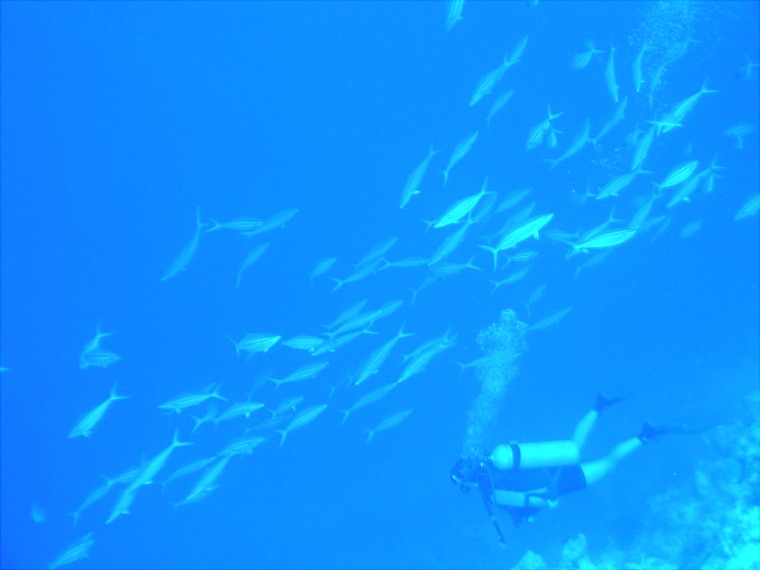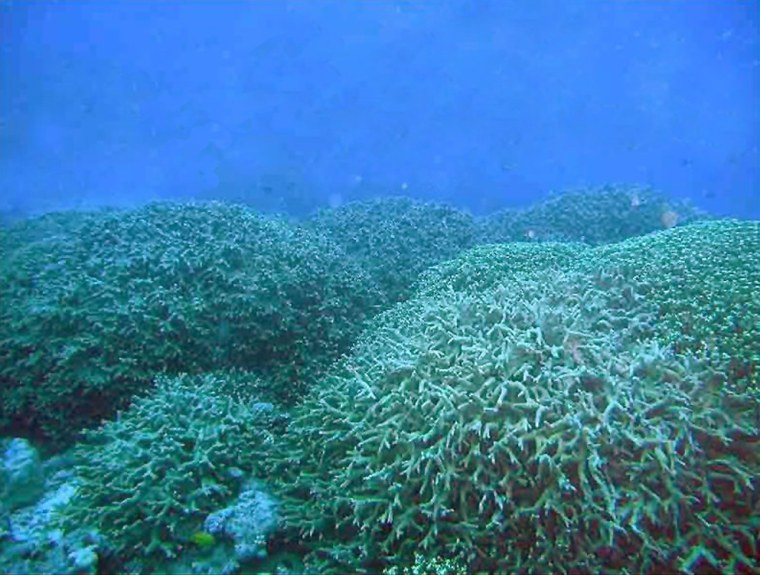Coral is again flourishing in the crater left by the largest nuclear weapon ever detonated by the United States, 54 years after the blast on Bikini Atoll, marine scientists reported Tuesday.
A team of research divers visited Bravo crater — ground zero for the test of a thermonuclear weapon in the remote Marshall Islands on March 1, 1954 — and found large numbers of fish and coral growing, although some species appeared locally extinct.
"I didn't know what to expect, some kind of moonscape perhaps. But it was incredible, huge matrices of branching Porites coral had established, creating thriving coral reef habitat," Zoe Richards, from Australia's James Cook University, said of the trip to the atoll in the South Pacific.
"We saw communities not too far from any coral reef, with plenty of fish, corals and action going on, some really striking individual colonies," she said.
The 15 megaton hydrogen bomb was 1,000 times more powerful than the blast that destroyed Hiroshima, vaporizing islands with temperatures hitting 99,000 degres Fahrenheit, and shaking islands up to 120 miles away.
The resulting 4 mile-wide fireball left a crater 1 mile wide and 80 yards deep, while the mushroom cloud rose 62 miles over the South Pacific and radioactive fallout reached Australia and Japan.
Richards, from the Australian government-backed Centre of Excellence for Coral Reef Studies, said the research team from Germany, Italy, Hawaii, Australia and the Marshall Islands found corals up to 27 feet tall and some with 12 inch-thick trunks.
'Corals growing like trees'
"It was fascinating. I've never seen corals growing like trees outside of the Marshall Islands," Richards said.
While above-water areas remained contaminated and unfit for human habitation, healthy sub-sea species probably traveled on strong winds and currents from nearby Rongelap Atoll, which was not bombed in a series of 23 tests between 1946-58.

"It is absolutely pristine for another tragic reason. It received fallout and was evacuated of people, so now underwater it's really healthy and prevailing winds have probably been seeding Bikini Atoll's recovery," Richards said.
Compared with a study made before the atomic tests, the team established that 42 species were missing compared to the early 1950s, with at least 28 of those locally extinct. They attributed the loss to the blasts or resulting radioactivity.
“The missing corals are fragile lagoonal specialists — slender branching or leafy forms that you only find in the sheltered waters of a lagoon,” Zoe said.
Safe to visit, not to live there
Decontamination work at Bikini has made it safe to visit, but not to live or even live off the local food.
"The ambient gamma radiation the residential island of Bikini atoll was fairly low — pretty much like the background radiation in an Australian city," said Maria Beger of the University of Queensland, who took a Geiger counter with her on the expedition. "However when I put the Geiger counter near a coconut, which accumulates radioactive material from the soil, it went berserk."
The team was asked by Marshall Islands authorities to investigate Bikini for the first time since the tests, in part to see if a small diving industry could safely be expanded.
The waters around Bikini are littered with wrecks of old, decommissioned ships sunk during the atomic tests, including the aircraft carrier USS Saratoga and the former Japanese flagship HIJMS Nagato, from which Admiral Yamoto gave the order to attack Pearl Harbor.

"The healthy condition of the coral at Bikini atoll today is proof of their resilience and ability to bounce back from massive disturbances," Zoe said, "that is, if the reef is left undisturbed and there are healthy nearby reefs to source the recovery."
She added that that resiliency does not mean the threat to corals from climate change had been overestimated.
"Climate change is an ongoing struggle to survive with coral, with no reprieve in sight," she said.
